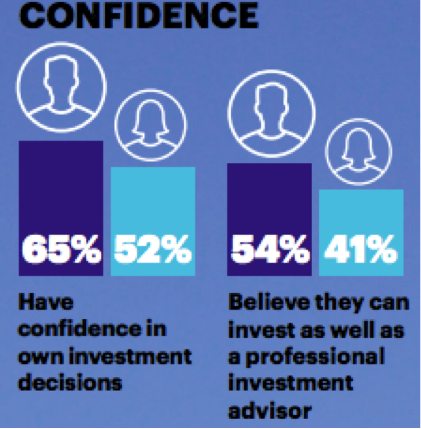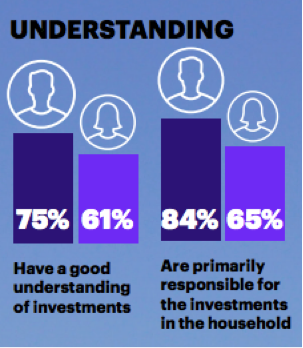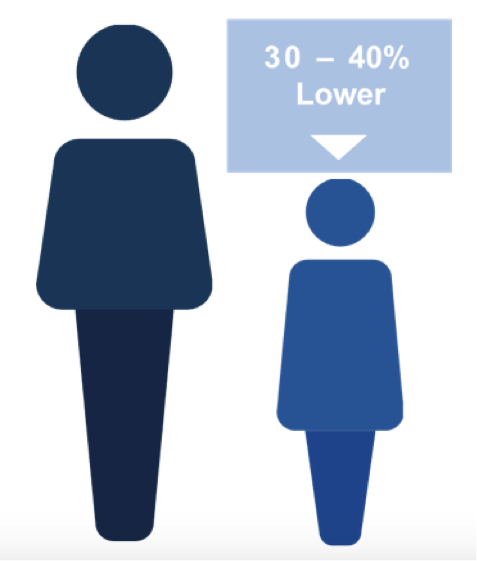There are a number of inequalities around females and finance:
- Men tend to control the finances in a couple
- Women are less likely to invest compared to men
- Females are significantly underrepresented in financial professions
Currently, according to the Centre for Financial Planning (CFP) Board, only 23% of Certified Financial Professionals are women.
Why men have traditionally controlled household finances
Historically, women had their financial freedoms restricted by law. Before 1975 in the US, a married woman couldn’t even get her own credit card without permission from her husband.
It was only in 1961 that India banned dowries for women before marriage and, even then, the law was largely ignored.
When it comes to being allowed access to an independent bank account, France was ahead of the UK and US. In 1881, French unmarried women were able to open their own accounts, a right not available in the UK until the 1960s and not until 1975 in the US.
This ultimately meant generations of women were raised with men in control of household finances and investments. We know tradition contributes to the behaviours of future generations and impacts the kind of conversations had about money around the dinner table.
In 2017, a report by Accenture Consulting found that 84% of men surveyed were primarily responsible for investments in the household against 65% of women surveyed being primarily responsible.
Source: Accenture Research
Female financial independence
The good news is that each new generation of females is more likely to be financially independent than the last.
It seems that women remain driven once they have a clear financial goal. Research by the Twine Savings and Investing app found that 45% of women aged between nineteen and thirty-six were motivated to achieve their financial goals.
Overall financial literacy has improved across the generations. Millennial women show high confidence in areas like budgeting. Unfortunately, when it comes to investing they, on average, show less confidence in comparison to their male peers.
The Accenture Consulting report also highlighted that females are less confident in their ability to make their own investment decisions. This is perhaps not an accurate indicator of ability but is instead an indicator of self-perception of investment ability.

Source: Accenture Research
Is the traditional model broken?
One challenge is adapting the approach to investing while not treating all women as having the same needs. Investing and financial planning should absolutely be a personal process, where gender has no place.
At United Advisers, we are continually evolving how we approach our planning process with clients. When we meet with new clients, we meet them as a couple, allowing both parties to have a say in their financial future. We believe this approach ensures the financial goals of the couple are complete and not biased towards one person. We believe financial planning affects the future of the family and should, therefore, be a family affair.
Everyone involved in financial services has a responsibility to review their marketing, client approach, and sales process to ensure it is gender neutral. This can be simple things like choosing appropriate imagery and providing examples that speak to everyone.
Differences in female investors?
The recent report by Accenture Consulting found differences between male and female investors, but the only real difference was in the approach to long-term investments. Only 12% of women consider their investing style to be aggressive with a preference for a more conservation approach.
Other changes signaled by the report are also indicative of general market trends like preferring advice structured around “financial journeys” and “life pictures”. Another preference highlighted was that 62% prefer a payment structure that allows them to choose the level of service provided. But again, this preference seems to follow changing market requirements rather than being a female preference.
Why women are underrepresented in financial professions
When females have little personal financial independence, it is hardly surprising there is underrepresentation in financial professions.
In America, the First Women’s Bank of Tennessee opened in 1919, to cater to female clients. This initially seems like a significant step forward for female representation but, while the employees and directors were female, the shareholders remained male. The pattern of male seniority in financial institutions continues to this day.
The impact of underrepresentation of females in financial professions is twofold;
- It limits the career progression and engagement of females within the industry
- It impacts how females are treated by their advisors
We are by no means saying that female investors need female advisers, but choice is essential. The make-up of the financial community should reflect that of the global population.
Brittain Prigge, President at Balentine, an Atlanta-based wealth management firm with $3.2 billion in assets under advisement, explains in Investment Times what she believes:
Women have a unique gift that makes us better equipped to nurture people through the wealth development and management process…Ultimately, the skill so often required, and lacking, is empathy…Counseling of this nature requires a level of empathy that’s innate for most women, and that is one of the best-kept secrets of the wealth management industry. We have a responsibility to dramatically increase the number of women in our field, which will ultimately make us all better.
The underrepresentation of female advisors may, in part, explain why so many female wealth management clients feel misunderstood:

Source: EY Women and Wealth Report
Why the balance needs to change
On average, women live longer than men and unfortunately, this means they spend more time as widows. When we don’t have an equal system, and we don’t tailor financial information to suit the needs of women, we are letting down a significant percentage of the population.
Creating a balance can be as simple as including both partners in financial planning meetings and ensuring they both understand the investments and the implications.
Another important, but often forgotten, step is to ensure that both partners have access to all accounts and investments. Often account details (and sometimes even their existence) aren’t shared within a household and because we have no guarantees of eternal good health this can often be to the households’ eventual detriment.
When it comes to retirement, there is a significant difference between pension gaps for women and men. Globally, retirement balances for women are typically 30-40% lower than those for men. While having lower average wages has contributed to the pension disparity, a longer life expectancy compounds the problem.
Looking towards the future
There are indeed changes that need to occur over the coming years. The struggle for equal representation and financial opportunity has been long, but there are positive indicators for the future.
Women are graduating with advanced degrees at an increasing rate and in the US 40% of households have a female breadwinner.
Women are on track to control the majority of the world’s wealth. It is important to note that this is in part due to increased female life expectancy and the impact this has on inheritance. According to the Boston College Center on Wealth and Philanthropy, women in the US are expected to inherit 70% of the wealth that will be passed down over the next two generations.
We hope articles like this help start the conversation. As more females are promoted and see financial planning as a viable career, it should also help attract more females to investing.
Attitudes to risk may remain different for male and female investors, but a good financial planner will develop a relationship (and portfolio) that meets the specific needs of the individual, couple, or family unit, regardless of gender.






